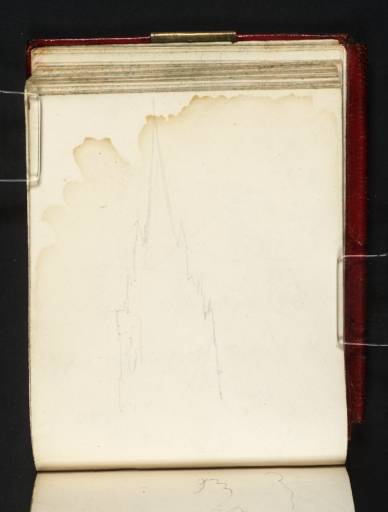During 1809, Turner was approached by the Oxford picture-dealer and framer James Wyatt for a view of the city, to be engraved.
1 On 17 November, Turner wrote to Wyatt who had now probably ‘made up your mind as to the expense of a drawing or Picture’. The subject, ‘an excellent one’, was available in an earlier drawing (Tate
D08219; Turner Bequest CXX F); ‘All Souls, St, Mary Church, All Saints, and looking up the High Street to Carfax Church’.
2 However, subsequent correspondence shows Turner proposing to make a new drawing on the spot and giving thought to the scope of his view, specifically whether or not it should include the Queen’s College. In a letter posted on Christmas Day he wrote that he ‘will leave here some day this week for Oxford’ and asked Wyatt to prepare ‘a sheet of paper pasted down on a Board in readiness, about 2 Feet by 19’.
3 This new drawing does not seem to have survived, although W.G. Rawlinson states that, while staying with Wyatt in Oxford, Turner made it from a post-chaise parked in the High just below the entrance to Queen’s.
4 The sketches in this sketchbook of details of buildings or architecture must have been made during the same visit.

